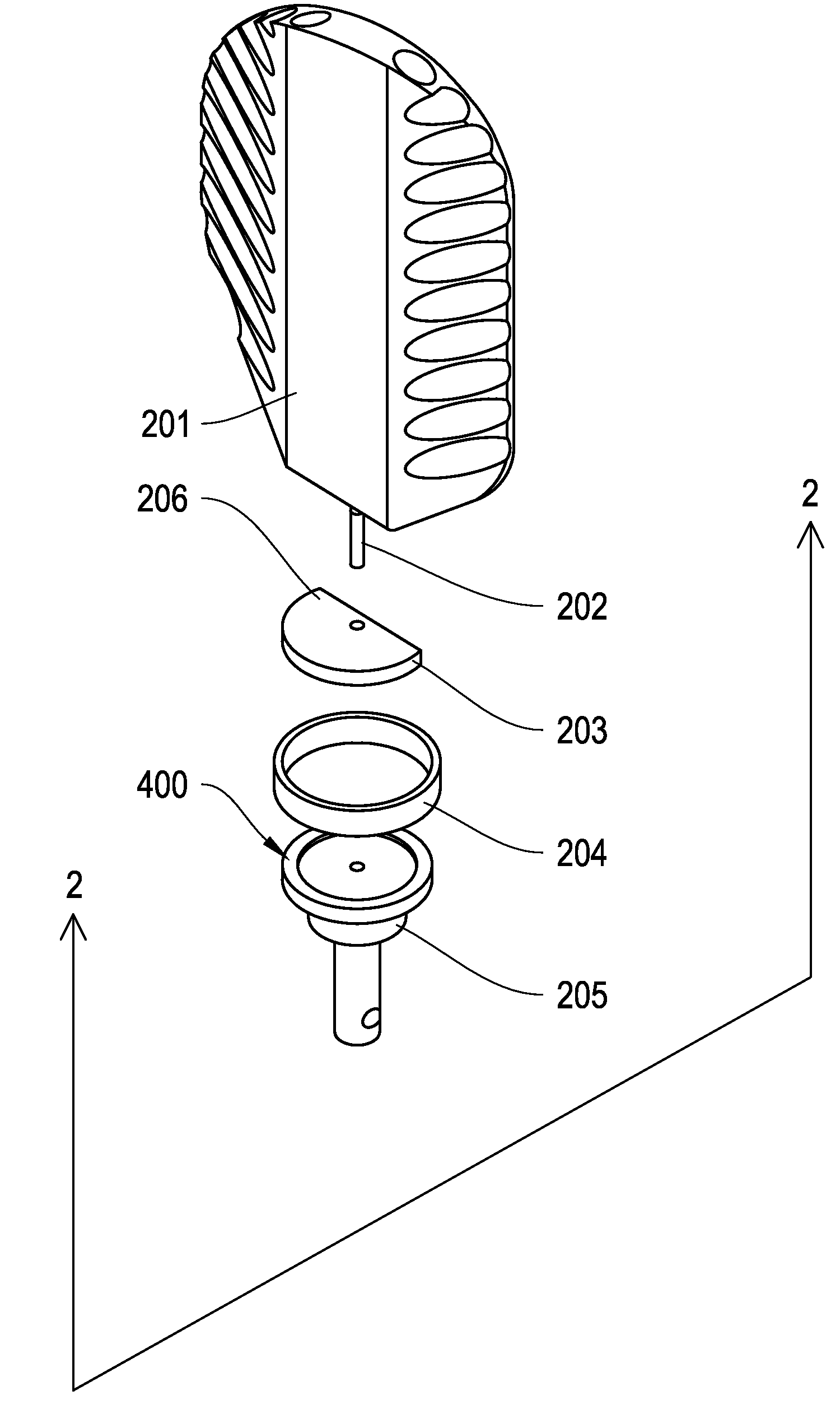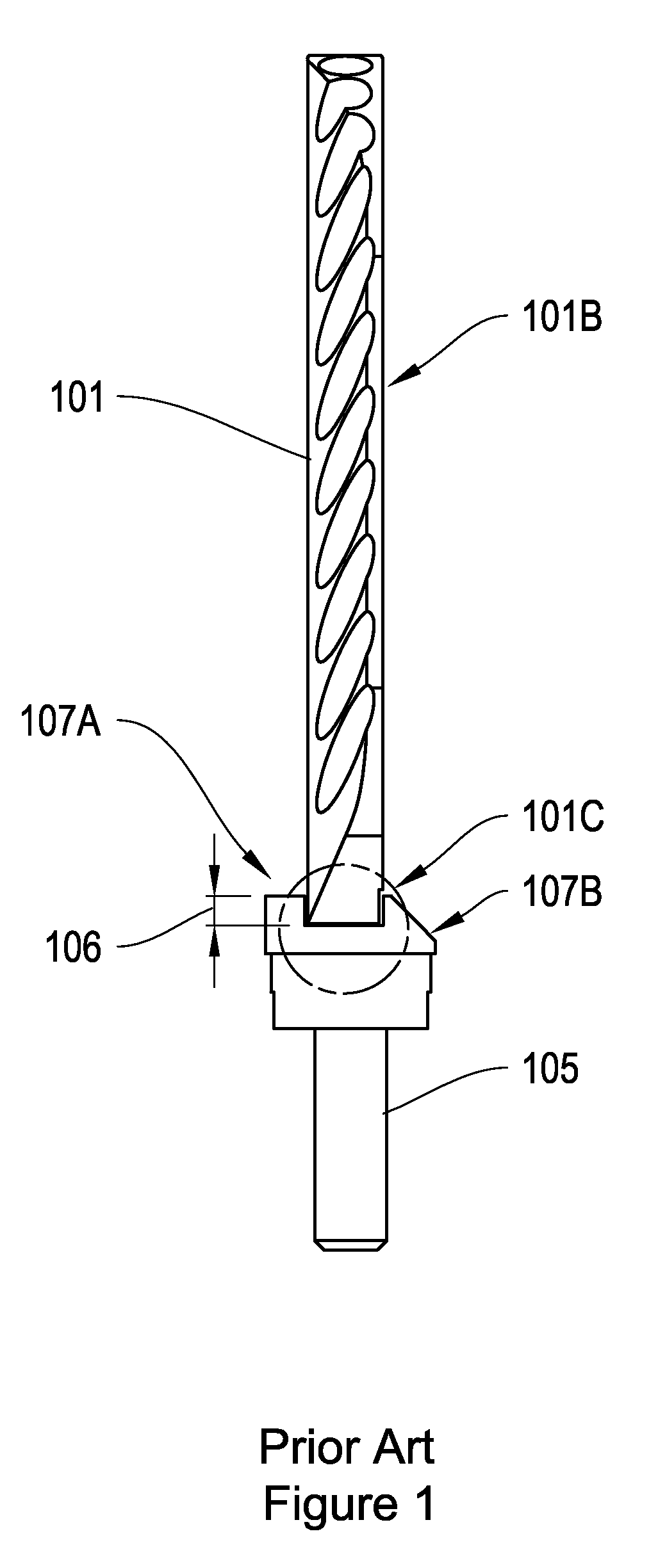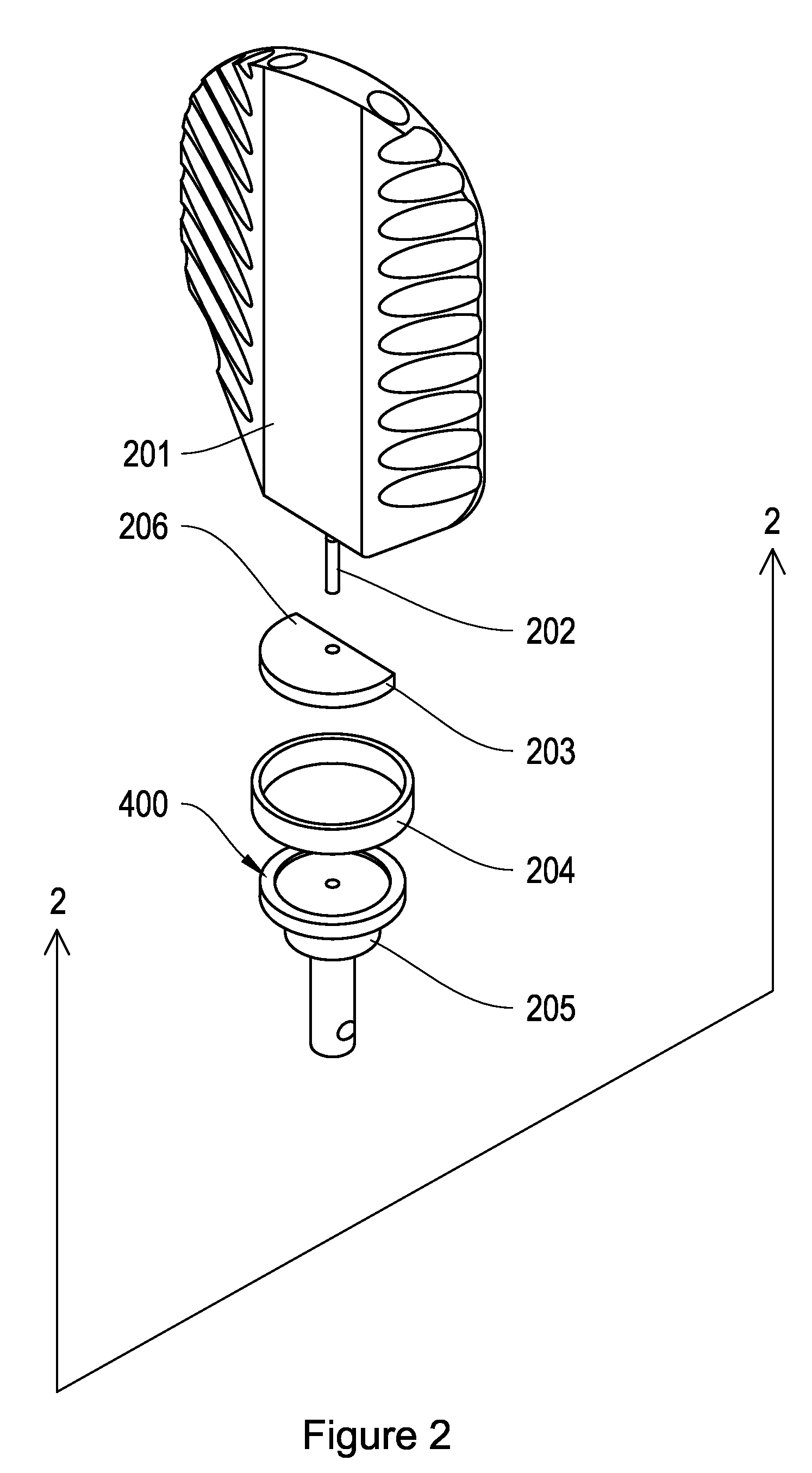Mirror Mounting
a technology for mirrors and mounting brackets, applied in the direction of mountings, shafts and bearings, instruments, etc., can solve the problems of increasing the length of the overall assembly of a given length of a mirror, affecting the appearance of the mirror, so as to reduce the length of the overall mirror assembly and increase the overall assembly length. , the effect of increasing the overall assembly length
- Summary
- Abstract
- Description
- Claims
- Application Information
AI Technical Summary
Benefits of technology
Problems solved by technology
Method used
Image
Examples
Embodiment Construction
[0015]Referring to FIGS. 1 and 2, in one embodiment of the invention a mirror (201) is coupled to a motor by a disk segment (203), alignment pin (202), clamp ring (204), and shaft coupling (205). Initially, a sub-assembly is made which includes the mirror, alignment pin and disk segment (hereafter, “mirror / disk segment sub-assembly (210)”). The mirror (201) is directly coupled to the disk segment (203). In particular, a prepared planar base surface (301A) of the mirror is bonded to a planar surface of the disk segment by soldering or brazing. The alignment pin (202) is utilized to facilitate alignment of the mirror (201) relative to the disk segment (203). In particular, the alignment pin (202) is inserted into a through-hole formed in the disk segment and also into a half-blind hole in the mirror. The half-blind hole and alignment pin may be of particular depth and length, respectively, that the pin bottoms-out in the half-blind hole, leaving a stub of known length protruding from ...
PUM
 Login to View More
Login to View More Abstract
Description
Claims
Application Information
 Login to View More
Login to View More - R&D
- Intellectual Property
- Life Sciences
- Materials
- Tech Scout
- Unparalleled Data Quality
- Higher Quality Content
- 60% Fewer Hallucinations
Browse by: Latest US Patents, China's latest patents, Technical Efficacy Thesaurus, Application Domain, Technology Topic, Popular Technical Reports.
© 2025 PatSnap. All rights reserved.Legal|Privacy policy|Modern Slavery Act Transparency Statement|Sitemap|About US| Contact US: help@patsnap.com



